
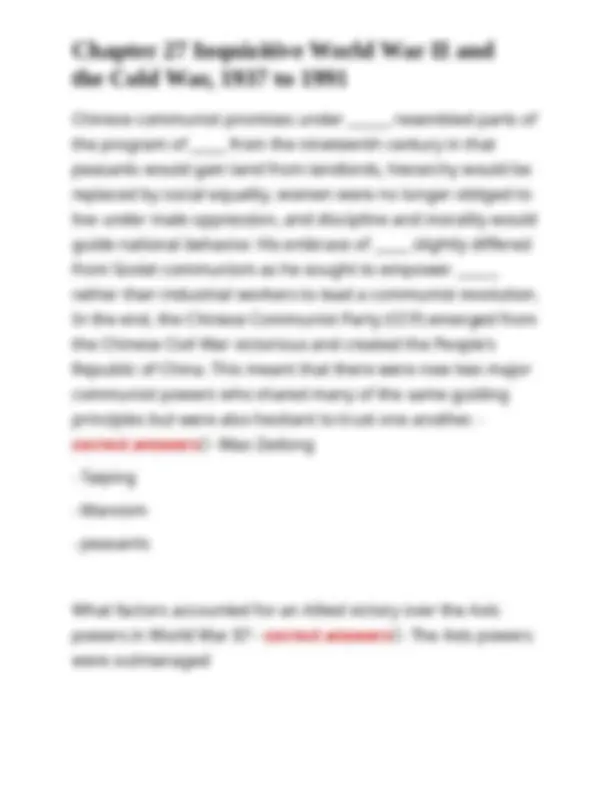
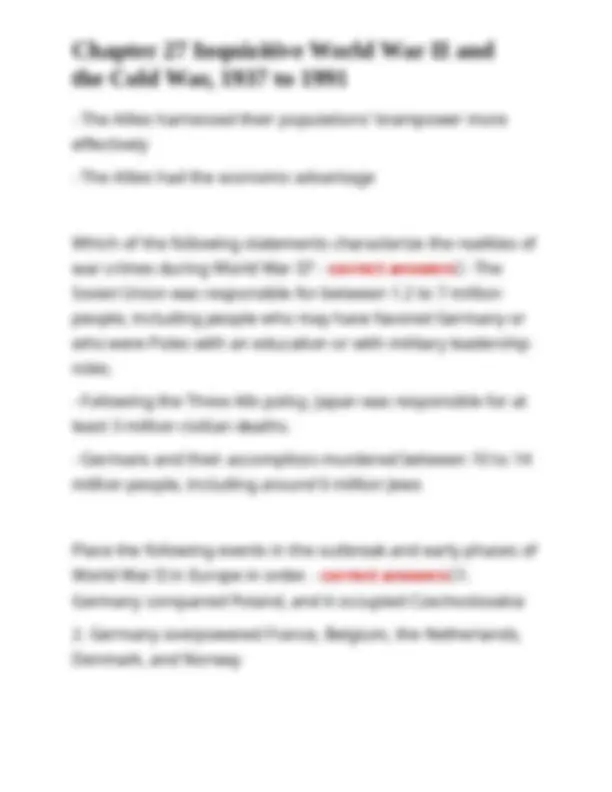
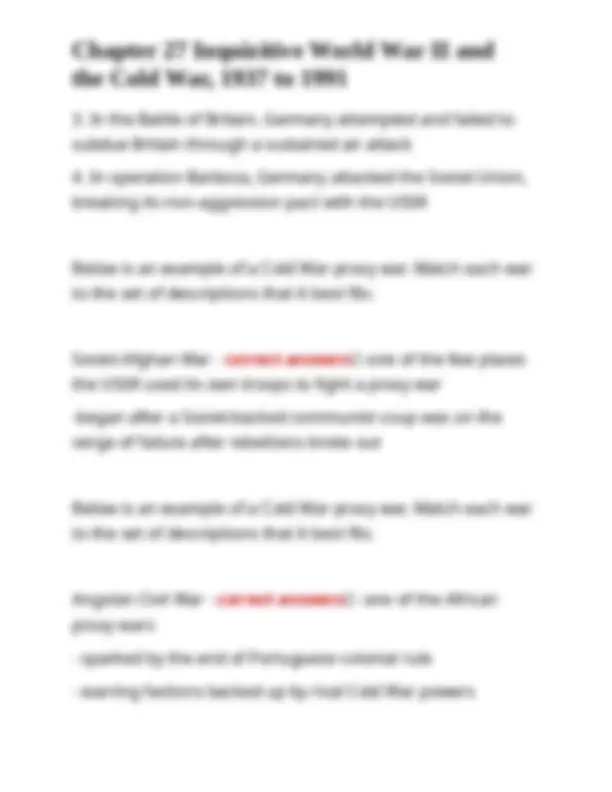
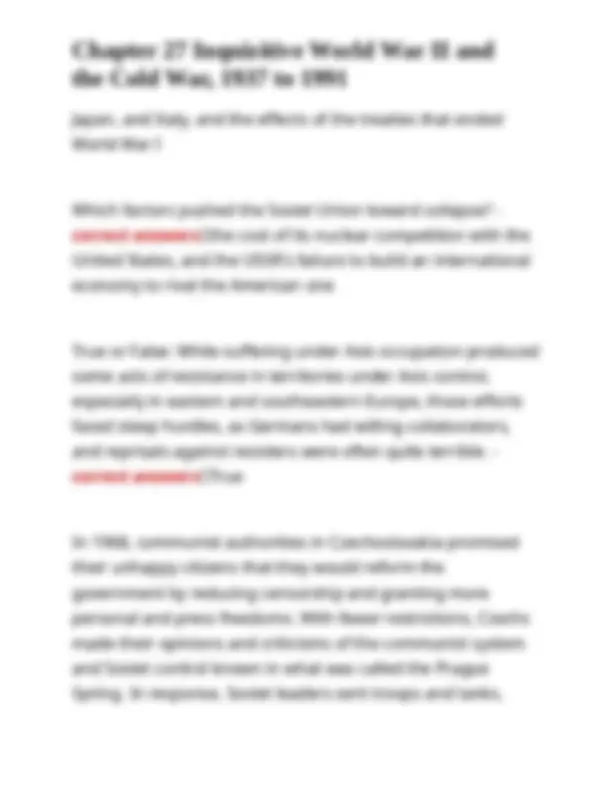
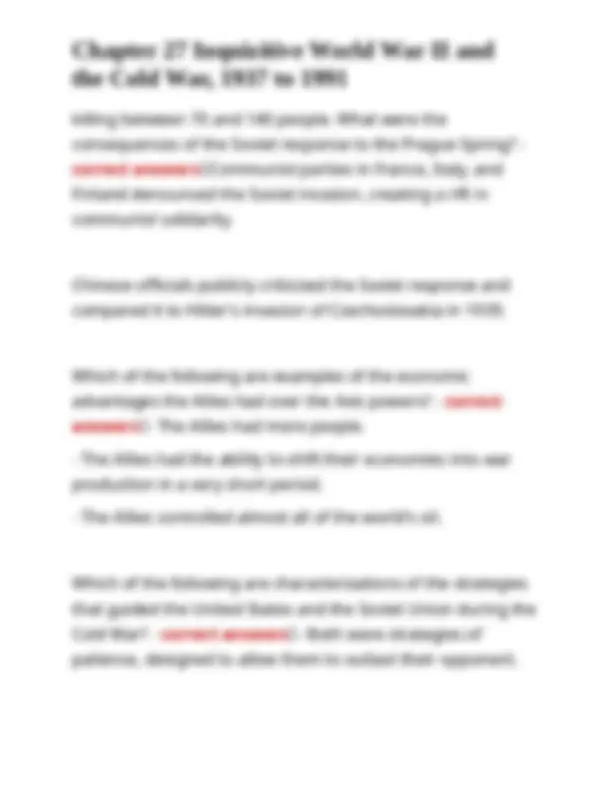
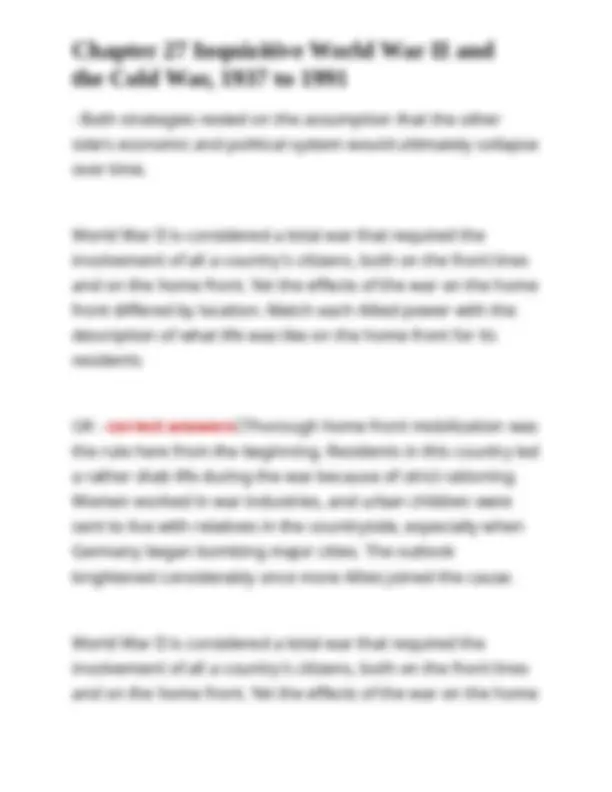
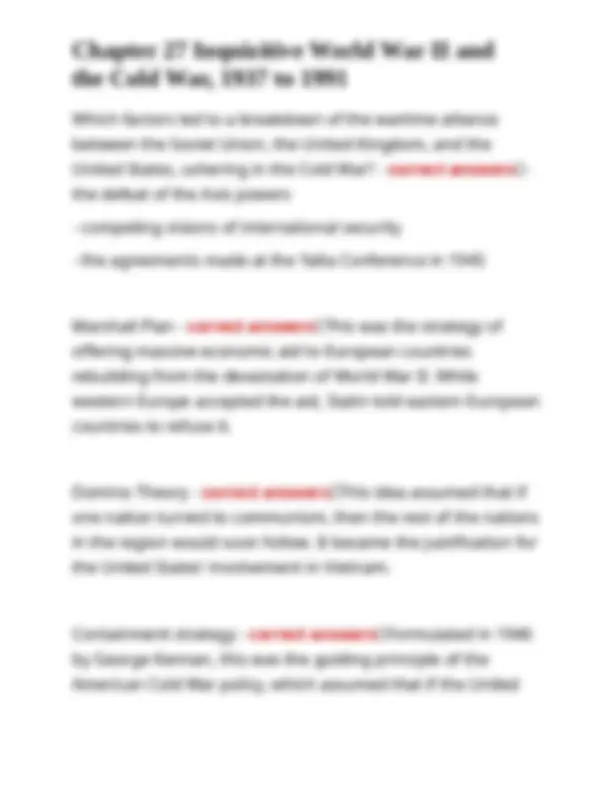
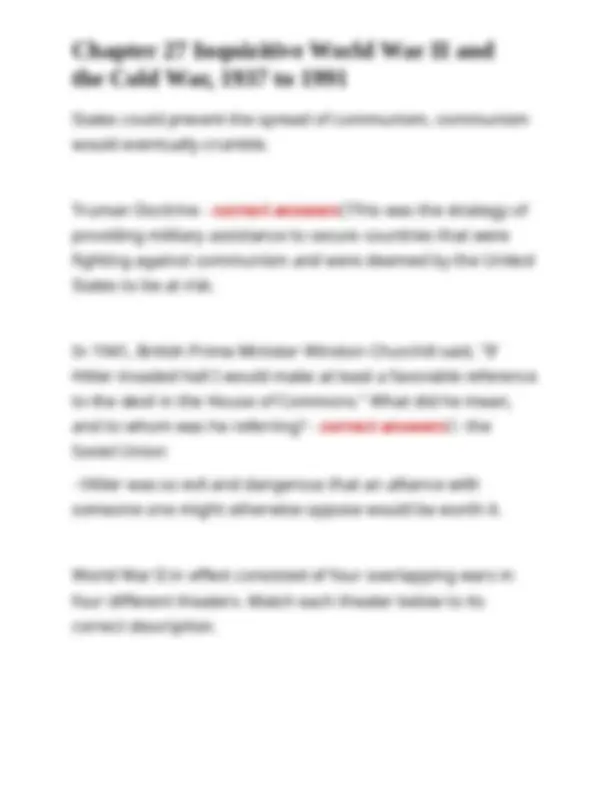
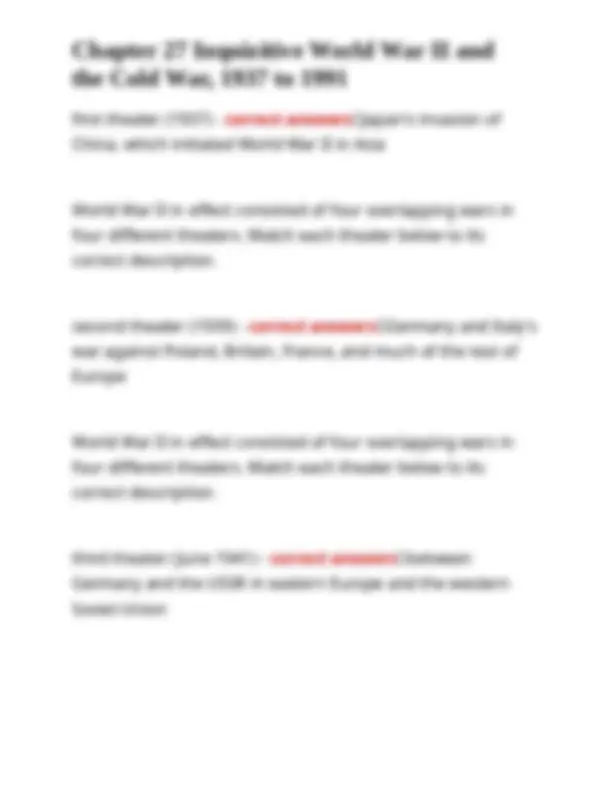
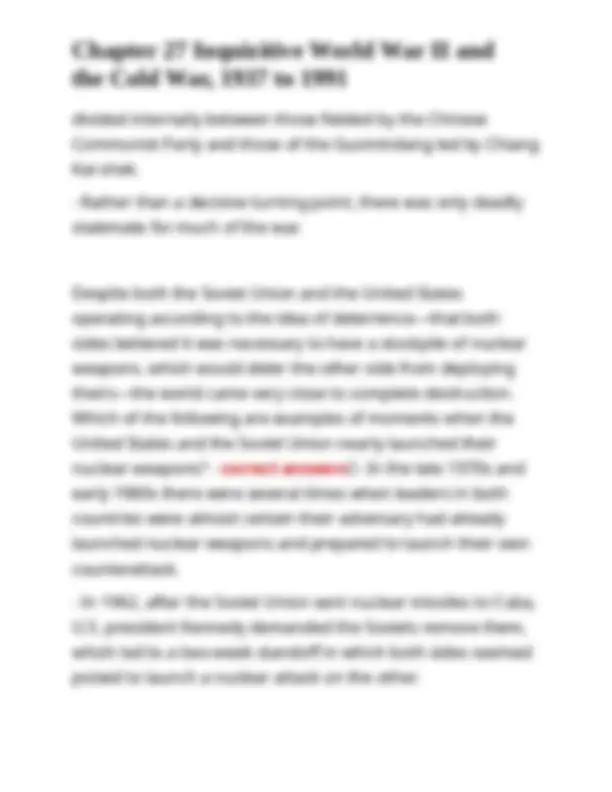
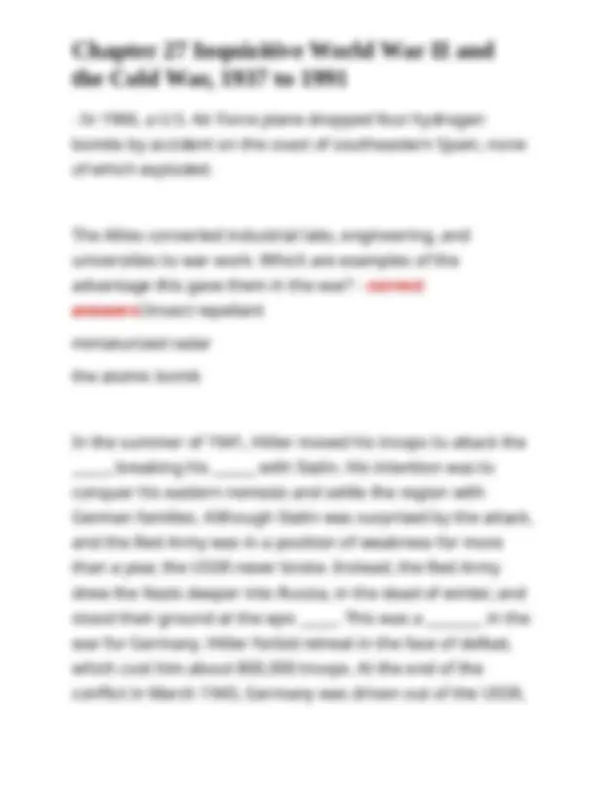
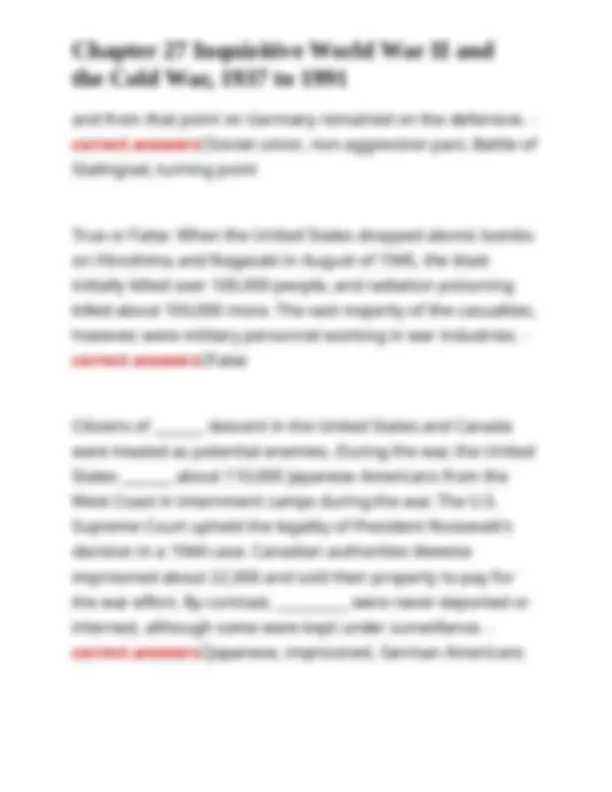
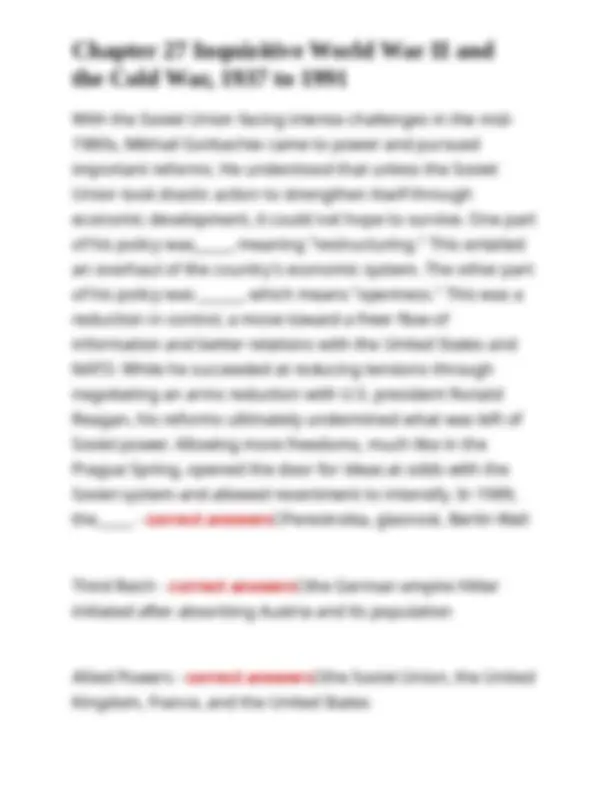
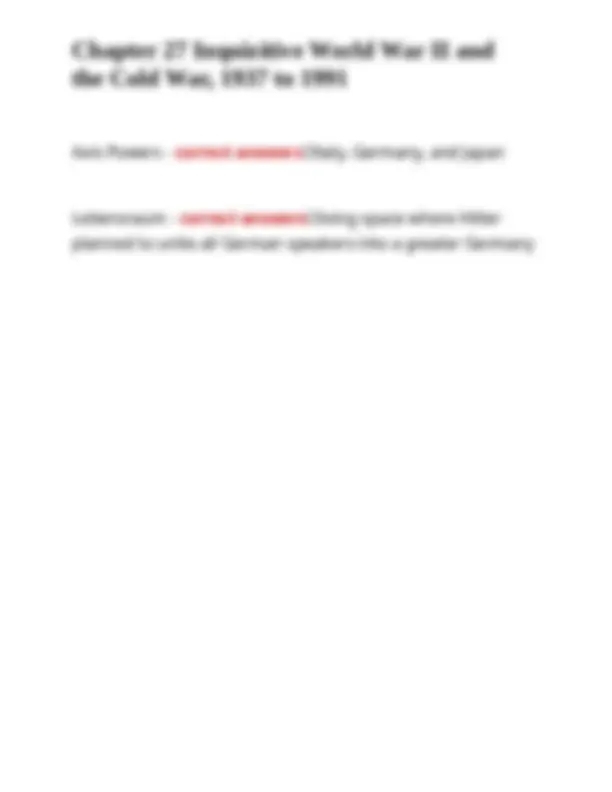


Study with the several resources on Docsity

Earn points by helping other students or get them with a premium plan


Prepare for your exams
Study with the several resources on Docsity

Earn points to download
Earn points by helping other students or get them with a premium plan
Community
Ask the community for help and clear up your study doubts
Discover the best universities in your country according to Docsity users
Free resources
Download our free guides on studying techniques, anxiety management strategies, and thesis advice from Docsity tutors
Chapter 27 Inquizitive World War II and the Cold War, 1937 to 1991
Typology: Exams
1 / 22

This page cannot be seen from the preview
Don't miss anything!















World War II is considered a total war that required the involvement of all a country's citizens, both on the front lines and on the home front. Yet the effects of the war on the home front differed by location. Match each Axis power to the description of what life was like on the home front for its residents. Japan - correct answers ✅The military kept a tight hold on any possibly negative information about the war and suppressed information that might make residents on the home front think poorly of its military's behavior on the front lines. While support remained strong among its subjects, the government began to call on women to begin working in war industries as mandatory "volunteers." World War II is considered a total war that required the involvement of all a country's citizens, both on the front lines and on the home front. Yet the effects of the war on the home front differed by location. Match each Axis power to the description of what life was like on the home front for its residents.
Germany - correct answers ✅Having prepared years in advance, this country experienced a relatively quiet first few years of the war. However, as the war dragged on, residents on the home front could no longer ignore the presence of millions of enslaved laborers and news of extermination camps, and they faced more regular bouts of Allied bombing in their cities. World War II is considered a total war that required the involvement of all a country's citizens, both on the front lines and on the home front. Yet the effects of the war on the home front differed by location. Match each Axis power to the description of what life was like on the home front for its residents. Italy - correct answers ✅Outside of fascist circles, residents in the country felt they were fighting on the wrong side of the conflict. Regular defeats in the field in North Africa and eastern Europe further eroded both military morale and public support. By 1943 the Allies had invaded, and the country had turned on its leader and quit the war.
Japan, and Italy, and the effects of the treaties that ended World War I Which factors pushed the Soviet Union toward collapse? - correct answers ✅the cost of its nuclear competition with the United States, and the USSR's failure to build an international economy to rival the American one True or False: While suffering under Axis occupation produced some acts of resistance in territories under Axis control, especially in eastern and southeastern Europe, those efforts faced steep hurdles, as Germans had willing collaborators, and reprisals against resisters were often quite terrible. - correct answers ✅True In 1968, communist authorities in Czechoslovakia promised their unhappy citizens that they would reform the government by reducing censorship and granting more personal and press freedoms. With fewer restrictions, Czechs made their opinions and criticisms of the communist system and Soviet control known in what was called the Prague Spring. In response, Soviet leaders sent troops and tanks,
front differed by location. Match each Allied power with the description of what life was like on the home front for its residents US - correct answers ✅With the exception of one major Axis attack, this country faced no serious threat to its home front safety. It also faced no major deprivations even though authorities imposed rationing. Its citizens from all ranks of society joined the home front war effort, working in factories, war offices, and farms. Its ability to churn out tons of supplies, machines, weapons, and munitions kept the Allies alive. By 1942, however, authorities had imprisoned over 100, residents of Japanese descent for the duration of the war. World War II is considered a total war that required the involvement of all a country's citizens, both on the front lines and on the home front. Yet the effects of the war on the home front differed by location. Match each Allied power with the description of what life was like on the home front for its residents
Which factors led to a breakdown of the wartime alliance between the Soviet Union, the United Kingdom, and the United States, ushering in the Cold War? - correct answers ✅- the defeat of the Axis powers
States could prevent the spread of communism, communism would eventually crumble. Truman Doctrine - correct answers ✅This was the strategy of providing military assistance to secure countries that were fighting against communism and were deemed by the United States to be at risk. In 1941, British Prime Minister Winston Churchill said, "If Hitler invaded hell I would make at least a favorable reference to the devil in the House of Commons." What did he mean, and to whom was he referring? - correct answers ✅- the Soviet Union
World War II in effect consisted of four overlapping wars in four different theaters. Match each theater below to its correct description. fourth theater (December 1941) - correct answers ✅Japan's war against the United States, the United Kingdom, and Australia in the Pacific and Southeast Asia Place the events from the final years of World War II in Europe in order. - correct answers ✅1. Italy surrendered to the Allies
actions? - correct answers ✅the United Nations Human Rights Commission Place the following events in Japan's path to war in order. - correct answers ✅1. The United States, Britain, and the Netherlands stopped oil and steel exports to Japan
and from that point on Germany remained on the defensive. - correct answers ✅Soviet union, non-aggression pact, Battle of Stalingrad, turning point True or False: When the United States dropped atomic bombs on Hiroshima and Nagasaki in August of 1945, the blast initially killed over 100,000 people, and radiation poisoning killed about 100,000 more. The vast majority of the casualties, however, were military personnel working in war industries. - correct answers ✅False Citizens of _______ descent in the United States and Canada were treated as potential enemies. During the war, the United States _______ about 110,000 Japanese Americans from the West Coast in internment camps during the war. The U.S. Supreme Court upheld the legality of President Roosevelt's decision in a 1944 case. Canadian authorities likewise imprisoned about 22,000 and sold their property to pay for the war effort. By contrast, __________ were never deported or interned, although some were kept under surveillance. - correct answers ✅Japanese, imprisoned, German Americans